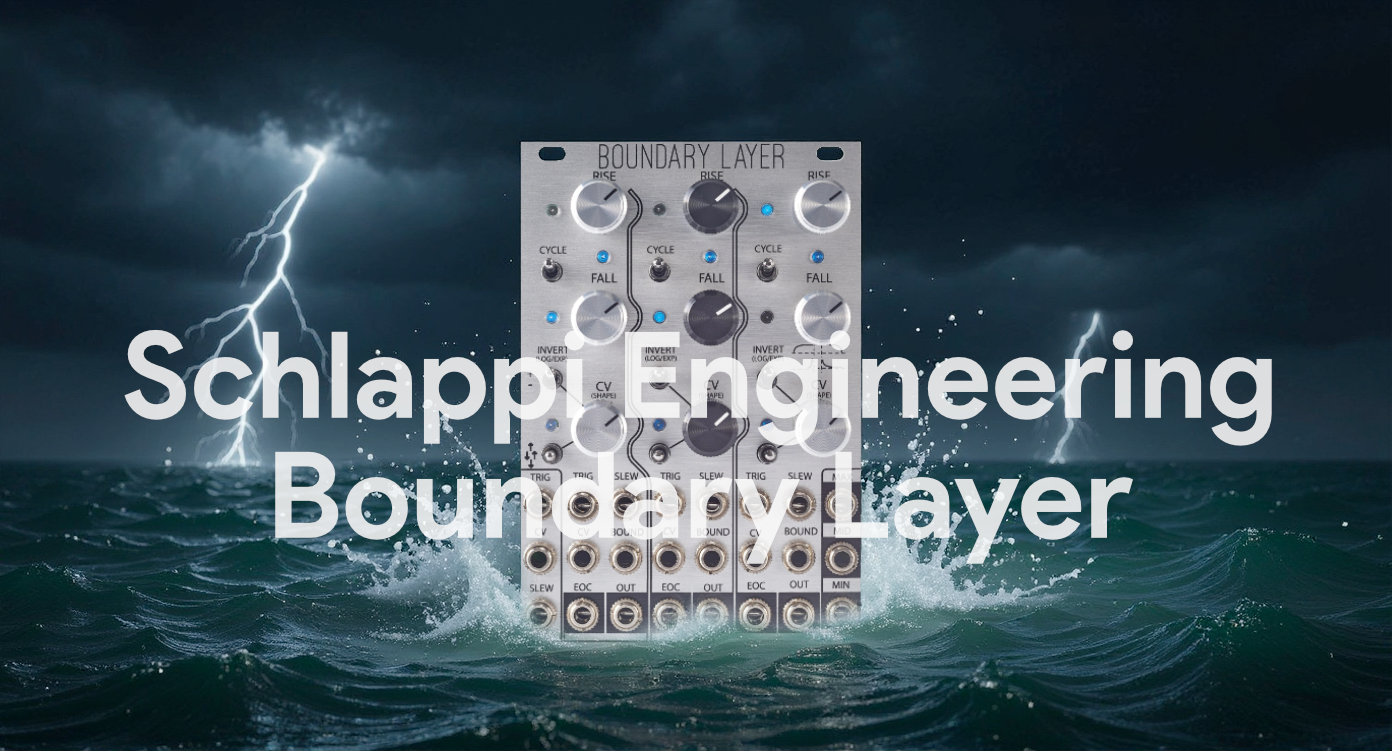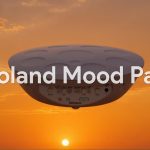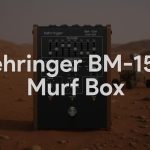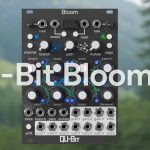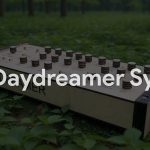The Module That Refuses to Be Categorized
Most Eurorack modules are content to fulfill a single purpose—an oscillator oscillates, a filter filters, an envelope shapes. But Schlappi Engineering’s Boundary Layer laughs at such pedestrian notions of categorization. This isn’t just another utility module; it’s a shape-shifting creature that exists in the liminal space between modulation, audio generation, and controlled chaos.
At first glance, the Boundary Layer might seem like a complex slew limiter—and it is. But calling it “just” a slew limiter is like calling a Swiss Army knife “just” a blade. This triple cycling slew is simultaneously a modulation oscillator, voltage-controlled portamento, envelope generator, and drone synthesizer, often all at once.
Philosophy Meets Function: Embracing the In-Between
Schlappi Engineering has built their reputation on modules that occupy the fuzzy boundaries between traditional synthesizer categories, and the Boundary Layer is perhaps their most ambitious exploration of this philosophy yet. The name itself hints at the aerodynamic concept where smooth airflow transitions to turbulence—a perfect metaphor for how this module transforms simple control voltages into complex, evolving textures.
The Boundary Layer embodies the modular ethos at its purest: one module, countless possibilities, limited only by your imagination and patching creativity. It’s designed for explorers who see synthesis not as a series of discrete functions, but as a fluid ecosystem where boundaries blur and unexpected behaviors emerge.
Three Channels, Infinite Personalities
Each of the Boundary Layer’s three channels is a complete universe unto itself. Individually, any channel can function as:
Modulation Oscillator: From glacially slow LFO rates (we’re talking minute-long cycles) to audio-rate frequencies exceeding 10kHz with exponential feedback, each channel becomes a voltage-controlled oscillator with distinctly analog character.
Voltage Controlled Slew: Perfect for smoothing stepped sequences, creating portamento effects, or adding organic movement to rigid digital sources. The slew response is beautifully musical, never clinical.
AR/AD Envelope Generator: Whether you need attack-release or attack-decay behavior depends entirely on how you patch it. Feed the TRIG input for snappy AD envelopes, or use the SLEW input for more complex AR shapes.
But the real magic happens when these three channels interact through the global control system.
The Global Network: Where Individual Becomes Collective
Three global inputs—RISE/FALL/BOTH CV, BOUND, and TRIG/SLEW—simultaneously affect all three channels, creating a unified control system that feels almost organic in its responsiveness. The BOUND input is particularly clever, providing simultaneous control over both cycling rate and amplitude, allowing for expressive real-time performance.
Even more intriguing are the three combined outputs: MAX, MID, and MIN. These outputs continuously analyze all three channel voltages and output the highest, middle, and lowest values respectively. It sounds simple on paper, but in practice, these outputs create complex, ever-changing relationships between the channels.
Audio Rate Alchemy: The Drone Synthesizer Hidden Within
When pushed into audio rate territory, the Boundary Layer reveals its most surprising personality: a patch-programmable stereo drone synthesizer. The MAX/MID/MIN outputs become the foundation for rich, evolving drone textures that seem to breathe and morph organically.
The beauty lies in the unpredictability. As each channel cycles at slightly different rates or responds to different modulation sources, the MAX/MID/MIN relationships constantly shift, creating natural stereo movement and timbral evolution without any additional modules. It’s like having a generative composition engine built into a utility module.
Tactile Control and Visual Feedback
The front panel strikes an elegant balance between functionality and clarity. Each channel’s controls are logically grouped, while the global inputs provide immediate access to system-wide changes. The EOC (End of Cycle) outputs, switchable between EOR (End of Rise) and EOF (End of Fall), provide precise timing information for downstream modules.
LED indicators provide clear visual feedback about each channel’s state, crucial when dealing with slower modulation rates where audio feedback isn’t immediately apparent. There’s something mesmerizing about watching the three channels pulse and breathe at different rates, their relationships constantly shifting like a mechanical meditation.
Compact Powerhouse in a Skiff-Friendly Package
At 16 HP and just 32mm deep (including cables), the Boundary Layer fits comfortably in even the most space-constrained systems. This skiff-friendly depth is increasingly rare in complex modules, making it an ideal choice for portable rigs or crowded cases.
The current draw is remarkably reasonable—170mA on the +12V rail and 100mA on -12V—especially considering the module’s extensive functionality. This efficiency speaks to thoughtful engineering that prioritizes both performance and practicality.
The Sound: Organic Complexity from Simple Inputs
Sonically, the Boundary Layer has a distinctly analog character. The slew circuits aren’t perfectly clean—they have subtle nonlinearities and quirks that add musicality to everything they touch. When cycling at audio rates, there’s a warm, slightly saturated quality that sits beautifully in a mix without the harshness that digital alternatives can exhibit.
The module excels at creating movement and evolution in static patches. Feed it simple gate patterns or steady voltages, and it transforms them into flowing, organic sequences that feel alive. It’s particularly magical with ambient and experimental music, where its unpredictable but musical nature can drive entire compositions.
Modular Synthesis Elevated: Beyond Utility
The Boundary Layer represents modular synthesis at its most creative and boundary-pushing. This isn’t a module you buy to solve a specific problem—it’s a module you buy to discover problems you didn’t know you had and solutions you never imagined.
In an era where many modules feel like rehashes of classic circuits or straightforward digital implementations, Schlappi Engineering continues to push into uncharted territory. The Boundary Layer feels genuinely innovative, offering functionality that simply doesn’t exist in traditional synthesizer architectures.
Investment in Creative Chaos
Available from quality retailers like Thomann and directly from Schlappi Engineering, the Boundary Layer represents serious value for exploratory synthesists. This is the kind of module that reveals new capabilities months or years after you think you’ve mastered it, making it a long-term creative investment rather than just another utility purchase.
Whether you’re building your first modular system or expanding an established rig, the Boundary Layer offers a unique combination of practical utility and creative inspiration that’s difficult to find elsewhere in the Eurorack ecosystem.
Ready to explore the boundaries? Visit schlappiengineering.com to dive deeper into the specifications and join a community that’s redefining what modular synthesis can become.
You can also buy at Thomann.de for 349€
About Me
Hi, I’m Canoy Dang. I grew up in Granada and now living in Málaga, in the south of Spain. Sound has always played a central role in my life — from early home recordings to the deeper, ongoing exploration of the modular synth world. Modular, semi-modular, and desktop synthesizers have become my main tools for expression, experimentation, and sometimes, simply for getting lost in the process.

